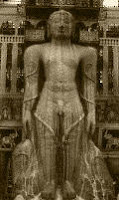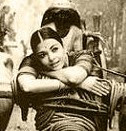"I can't help blossoming
Am I not the golden cassia?
Isn't it the Vishu season?
I can't help blossoming"
- Ayyappa Paniker (poet, critic and scholar)Am I not the golden cassia?
Isn't it the Vishu season?
I can't help blossoming"
As I conceived the article on Baker, the idea of having a regular column occurred to me. A column was a laborious assignment that I gave to the lazy writer in me- too much of a responsibility. But it was fascinating. At that time, I was smitten by a column in "Samakaalika Malayalam" weekly by S. Gopalakrishnan. What captured my imagination was its variety of the topics, the depth and clarity of the views and the rich culture the author has imbibed.
 Within the narrow framework of my limited reading and experience, the only things I could think of emulating were the diversity of themes, and the title- "Jalarekhakal" (lines in water). The search for something close to that in impermanence led me to "Writings on Sand". I had in my mind, a dialogue in the movie, "Dil Se..."(Some people are like names on sand, even a whiff can take them away) and a line by poet Balachandran Chullikkad (The sea has washed away thy name that my clumsy fingers scribbled on the sand). After christening, I thought about the possible other aspects the name can have. Till one generation ago, children in Kerala started their writing in sand in the 'Aasaan Pallikkoodam'. I felt like student before a watchful master, heedful of what I think and write. I also hoped, out of unfounded optimism, that these letters will invite a sea of readers as those written on the seashore by kids do...
Within the narrow framework of my limited reading and experience, the only things I could think of emulating were the diversity of themes, and the title- "Jalarekhakal" (lines in water). The search for something close to that in impermanence led me to "Writings on Sand". I had in my mind, a dialogue in the movie, "Dil Se..."(Some people are like names on sand, even a whiff can take them away) and a line by poet Balachandran Chullikkad (The sea has washed away thy name that my clumsy fingers scribbled on the sand). After christening, I thought about the possible other aspects the name can have. Till one generation ago, children in Kerala started their writing in sand in the 'Aasaan Pallikkoodam'. I felt like student before a watchful master, heedful of what I think and write. I also hoped, out of unfounded optimism, that these letters will invite a sea of readers as those written on the seashore by kids do...Not surprisingly, in the past one year, very few entries appeared in this column. Reasons were many, including my deliberate post- September sabbatical. But apart from that, there is a thumb rule I kept about writing, which can be pointed out as the first reason why writers write. The Malayalam writer Kunjunni maash once said, "Don't write when you feel like writing, not even when you desperately want to write. Write only when you can't help writing". The whole process is thus lifted to a new plane- the piece being written driving and leading the writer. Just like the Golden Cassia which can't help blooming, even if it tries to resist. That's how a creation should come out of the writer. Isn't this what Wordsworth meant by "spontaneous overflow"? ONV, another Malayalam poet has gone a step ahead in comparing this helplessness of the writer to that of a fish unable to control the blood gushing out of its hook-struck gills. So I claimed I was waiting for genuine inspiration - situations where I couldn't help writing. Those were rare indeed. Often, my innate laziness and editorial freedom were camouflaged under this excuse. Some readers too told me not sacrifice quality for consistency, to which I gladly agreed. All the pieces you've read, including this one, came into being thanks to what Calvin once described as the right mood- "last minute panic".
True, it's a pain, sometimes compared to that of conceiving, carrying and delivering a baby. Here also the remedy is to "get it out". Until it's out, it nags, engages and distracts from everything else. Once done with, it satisfies like nothing else can. In fact, more than the appreciation from readers it is this relief that is rewarding for a writer. Once I finish writing, I read and re- read it, and then exasperate all my friends by begging them to review, edit and polish, don't know how many times. Then I keep returning to it and look at it with narcissistic pride. It is then the marketing part comes. Some people criticize me for blatantly advertising my writing in every way I can. Actually, the next thing a writer seeks after the self satisfaction is the views from like minds. I believe every writer writes with one reader in mind- one 'like minded' reader...somewhere in the world...waiting for these words...This is the second factor that motivates a writer; one which fills him with responsibility, which assures him that his words won't go unnoticed. Not always does this 'one reader' give bouquets. He might attack ferociously with cudgels. But again, he waits for your next work. It's to this 'one reader' the writer has to be truthful. It is to find out this 'one reader', a writer needs advertisement.
Though I am using first person narrative throughout this article, I believe the feelings I mention are those shared universally by all those who have tried their hand at writing. The third reason behind writing, I should say is the freedom it gives. As the old Sanskrit sloka says (Apaare Kaavya Samsaare Kavireva Prajapathi), the writer is the emperor of that world- he creates, maintains and sometimes destroys it. For me writing is a solace, a safety valve- it is sheer escapism. There, no one is above me. No commands, no fetters, no long list of "don'ts". I can express freely what I feel, with only my conscience to reprimand. Whenever I was detained in the real world, I fled frantically to this "other" world. I loved and treasured it, it was a blessing. In January, after a long break, when I was trying diffidently to start writing again a friend called to enquire what I was doing. I replied, "The thing I enjoy most." True, in those moments, I LIVE...
Almost a year ago, a friend of mine was planning to leave the company. He used to read quite a lot and I wanted to make him write something for Thoolika*. I asked him in a light vein, "How do you plan to leave your mark here? Does the code you write carry your name?" He thought for a moment and replied out of a sad realization, "No, it has the company's name." With the true editorial spirit, I tried to cajole him to write with a hyperbolized pep talk, 'This is the last chance to etch your footprints on the sands of time'. Unfortunately Thoolika could not get an article from him before he left.
I feel lucky and relieved that I was able to scrawl something on the sand...
(*- Thoolika is the Infosys Trivandrum DC newsletter where this column used to appear. The author left Infosys before this article was published in it)
[Thoolika- April 2008]

 Atonement
Atonement









































